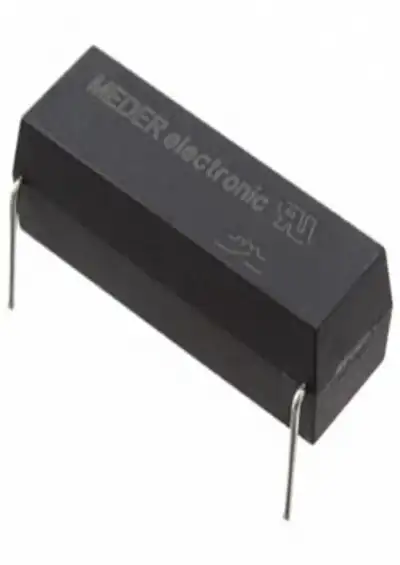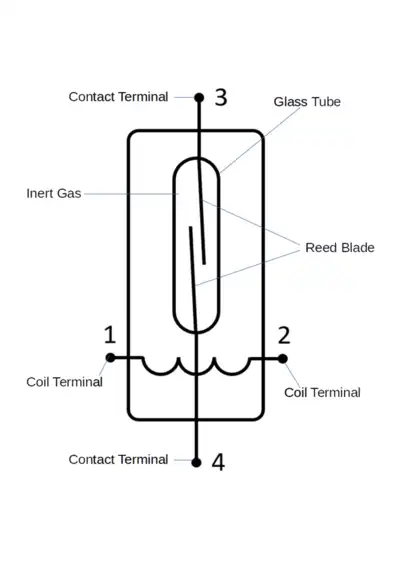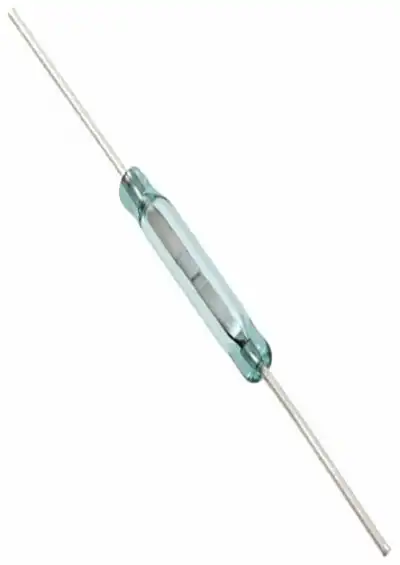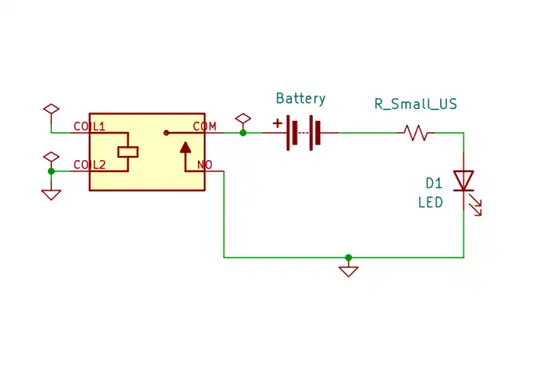Global high-mix volume high-speed Shenzhen PCBA manufacturer

Ru
9:00 -18:00, Mon. - Fri. (GMT+8)
9:00 -12:00, Sat. (GMT+8)
(Except Chinese public holidays)





Global high-mix volume high-speed Shenzhen PCBA manufacturer

Ru
9:00 -18:00, Mon. - Fri. (GMT+8)
9:00 -12:00, Sat. (GMT+8)
(Except Chinese public holidays)





HomePage > Blog > Knowledge Base > What is a Reed Relay?
There are different types of relays available in different sizes and ratings designed to meet different electronic, electrical, and industrial demands. Among the many available options is the reed relay. While it's not as popular as some of the relays out there, like any other relay, it has its unique features that make it stand out among others and is preferred for some specific applications.
Selecting the right component for your circuit will
improve its overall efficiency, power consumption, and durability of your
circuit. This article will help you to understand the different features of
reed relays, their working principle, and when best to consider them for use in
circuit design.

A reed relay is an automatic switch like any other known relay. A coil surrounds a glass tube containing thin magnetic reeds. The coil creates a magnetic field when a current flows through it; the magnetic field causes the reed to make contact, facilitating the automatic switching of the reed relay.
Meanwhile, a reed relay operates similarly to a standard relay, although it comes in a smaller package and switches faster than a common mechanical relay. They are suitable for low-power applications and are mostly considered for their silent, fast response and precise switching ability over a regular mechanical relay.
Since reed relays are highly energy-efficient, requiring only a brief pulse of current to switch states, they are perfect for battery-operated and low-power devices. However, reed relays are generally limited to low-current applications, as excessive current can lead to overheating or damage to the delicate reed contacts.
This limitation means reed relays are
typically chosen for circuits with moderate current and voltage requirements,
allowing them to provide reliable performance without the need for heavy-duty
components.

A reed switch is a device with two flattened ferromagnetic reeds, carefully sealed in a tube and controlled or made to make contact by an external magnet. It makes so much sense to say a reed relay is only a reed switch surrounded by an external coil controlled by an electrical signal.
The operation of a reed switch is based on the magnetic attraction between the reeds when placed in a magnetic field. In most designs of a reed switch, the trigger (usually a magnet) is not always in the same package as the switch, as the switching is dependent on its proximity to the magnet.
A good application of a reed switch is in a proximity sensor where the switch is separate from the magnet (trigger). Whenever the reed switch is within the magnet field, the reed makes contact, and the switch state becomes HIGH.

To understand how a reed relay works, it's important to understand its basic composition. The reed relay consists of a ferromagnetic reed blade, an electromagnetic coil, and a special casing to support its switching operation. The ferromagnetic blade is enveloped in a glass tube filled with dried inert gases, which prevents the switch contacts from oxidation.
When voltage is applied to the relay coil, it causes current to flow through the coil, consequently generating a sufficient magnetic switch that causes the reed to make contact and complete the electrical circuit. When the current in the voltage supply to the coil is cut, the current stops flowing in the coil, and the magnetic field created collapses, causing an open circuit of the reed switch.
The switching happens much faster compared to other known mechanical relays. While it doesn't switch as fast as a solid-state device, it is fast enough to generate a PWM (Pulse Width Modulation) signal in hundreds of hertz. While a reed relay can generate low-frequency PWM signals, it’s best suited for applications where lower switching speeds are needed and where the reed relay’s other qualities, which include isolation, durability, and reliability in low-power circuits, are a priority.
Electromechanical relays are far more common in the market and circuits than reed relays. Still, the reed relay has unique features that make it the preferable option in some use cases. Some of the edges a reed relay has over a mechanical relay include:
· Reed relays are easy to use, cheap, and economical for a mass production application.
· They usually occupy less space on a PCB and are lighter compared to a mechanical relay.
· Reed relays are reliable for fast-switching applications; their average response time is typically between 0.2 and 2 milliseconds.
· The power consumption of a typical reed relay coil is low and can be suitable for use in most low-power or energy-sensitive applications.
· Most reed relays have minimal moving parts and low-contact wear. This implies that the long switching lifespan is guaranteed.
· The on-state resistance of a reed relay is relatively low, and the off-state resistance is extremely higher compared to that of many known transistors, making them a perfect replacement in some applications.
· In many medical equipment where silence is a priority, reed relays are perfect for switching purposes. They function silently, eliminating the clicking sound typically associated with regular voltage stabilizer relays.
· Electromagnetic interference (EMI) is minimal in reed relays, which can be a major problem in sensitive electronic circuits.
· It comes in a package that shields it from environmental contaminants such as moisture and dust that can shorten its lifespan and effectiveness.
From the different advantages of reed relays mentioned above, we now have a good idea of when it should be considered for use. Some of the considerations that might make the use of a reed relay an option include fast switching, low power consumption, accurate response time, compactness, and more. Here are common examples of different applications of reed relays.
· Embedded Systems
Ø Microcontroller-Based Control Circuits for either relay activation, switch control, or device control.
Ø Signal routing
· Power Electronics
Ø Overcurrent protection circuit: Reed relay switches are faster compared to some other relays, making them suitable for isolating an entire circuit or a portion of the circuit when a dangerous current is sensed.
Ø DC-DC converters for disconnecting circuits during low-power states
· Sensor Design
Ø Proximity Sensors
Ø Fluid Level Detector
Ø Angular Speed Sensor
· Automotive Application
Ø Anti-Theft Systems:
Ø Fuel Level Sensor
· Industrial Automation
Ø Conveyor Belt Sensors
Ø Machine Control System
Ø Robotic Arms

While most mechanical relays can handle high current switching, they are not suitable for some extremely fast switching operations, such as switching between multiple sensors in a data acquisition system. In this scenario, a reed relay is a perfect choice, especially when the on-state that comes with using a transistor has to be avoided.
Proper understanding of this article will equip you with the adequate knowledge needed to help you decide which type of relay is suitable for your next electronics project, and also increase the options you have when deciding the perfect switch for your circuit.

Assembly Enquiry
Instant Quote